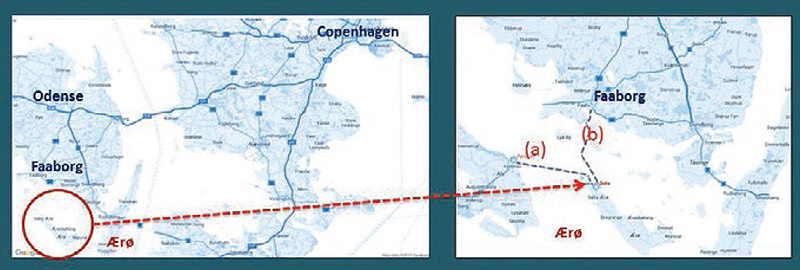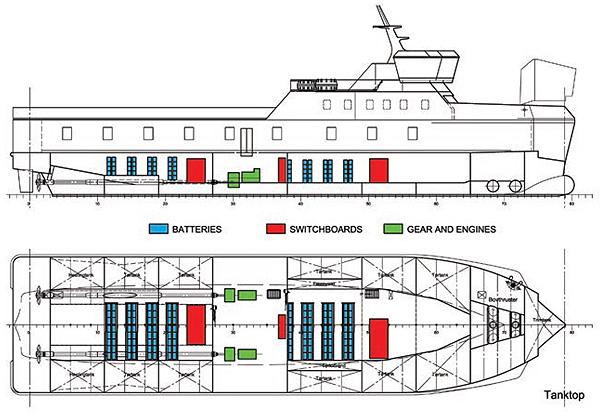NEW ENVIRONMENTAL TRENDS AND CHALLENGES
One of the major trends, in the world, is to move towards environmental-friendly solutions in as many fields as possible. Ferry services are facing significant challenges, among which, increasing price of energy, demand for energy-efficient sources and evolution of the regulation on GES emissions. Recent studies indicate that fully electric battery powered ferries provide the most optimal solution to these challenges. However, at this stage, introducing these electric ferries involves serious investment and bares an innovation risk. These downsides have often lead to conservative, less environmental-friendly solutions that are hybrid ferries, as they are considered more commercially viable. Although it is not often considered, this notion of cost-effectiveness should include the cost for society of the resort to polluting diesel fuel powered ferries, leading to important pollution, health induced problems and global warming. The E-ferry project was created to concretely demonstrate the great potential of fully electric ferries and to help the emergence of a cost-effective vessel.
A GROUNDBREAKING-EU SUPPORTED SOLUTION
Co-funded under the Horizon 2020 Programme, with a total budget of more than 20m €, the E-ferry aims to support and promote energy efficient, zero emissions waterborne transportation for island communities, coastal zones and inland waterways in Europe and beyond.
E-Ferry is coordinated by the Danish island municipality, Ærø, currently operating 3 conventional diesel ferries on 3 different routes. The new vessel will be demonstrated in reallife conditions on the Soeby-Fynshav (a) and Soeby-Faaborg (b) connections in the Danish part of the Baltic Sea. To keep investments reasonable and to limit the stress induced by the charging dock to electrical infrastructure, the E-ferry will only be charged in Soeby meaning the vessel will have to cover distances of up to 22 nm and be able to charge for only 15- 20 min each time.

The E-ferry demonstration area.
To meet the operating profiles, E-ferry relies on a battery capacity of 4.3 MWh. Leclanché has optimized the energy density and the design of its Lithium-ion Graphite/NMC batteries to keep the physical dimensions of the full system at a reasonable level in terms of weight and size.
Weight and space savings are also accomplished through the implementation of Visedo’s, electric propulsion and drive train system, offering unmatched energy efficiency and an extremely compact lightweight design, yet providing the required 1.5 MW propulsion power necessary to operate the E-ferry at the speed of 14.5 kts. The overall electrical system is based on Visedo's DC/DC converter technology and by charging the system directly with DC power, placed on shore, reducing the total weight by 20 tonnes.
Søby Shipyard and Naval Architects are jointly optimizing the performance of the entire vessel through an optimized hull-shape while Tuco Marine Group and The Danish Institute of Fire and Security Technology have joined forces to investigate the degree to which lightweight composite materials can be safely implemented in the E-ferry. On the safety side, Leclanché has been working for months on the certification of its entire Marine Rack System to meet the highest standards of the Danish Maritime Authority and DNVGL (Certification in process).

Altogether, the E-ferry is a state-of-the-art vessel on every aspect of its design and construction. The environmental goals foreseen target reductions in CO2 emissions by approximately 2.000 tonnes, NOX by 41.500kgr, SO2 by 1.350kgr and particulates by 2.500kgr per year.
Contact details:
http://e-ferryproject.eu/
Project Coordinator: Dr. Trine Heinemann (THE@aeroekommune.dk)
Impact Manager: Dr. Georgia Aifadopoulou (gea@certh.gr)
Ms. Annie Kortsari (akorts@certh.gr)
Partners

Disclaimer:
This project has received funding from the European Union's Horizon 2020 research and innovation programme under grant agreement No 636027.